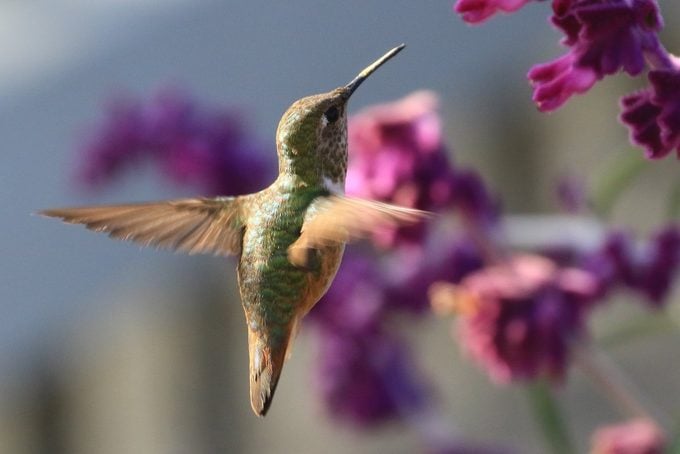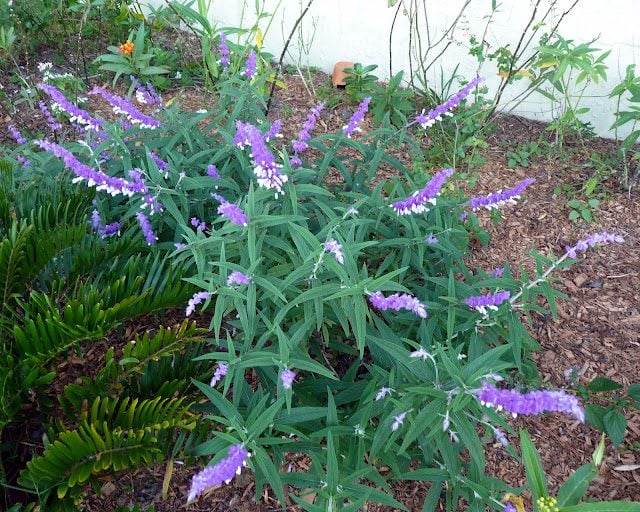Grow Mexican Bush Sage for Butterflies and Hummingbirds
Updated: Apr. 13, 2021
Plant Mexican sage in southern butterfly gardens for silvery foliage and fuzzy purple and white blooms. Grow this nectar-rich salvia to feed hummingbirds.

As cooler weather approaches in fall, butterflies and hummingbirds migrate south for the winter. Help them along the way or provide great nectar once they reach their southern destinations by adding Mexican bush sage to your butterfly garden this fall. Your backyard hummingbirds (and butterflies!) go crazy for the abundant nectar in the beautiful late-season purple-and-white blooms.
Check out more late-blooming fall flowers that attract butterflies.
How to Grow Mexican Bush Sage
Mexican bush sage is native to Mexico and South America, and does well in gardens in warmer areas. In cool climates, treat this shrubby perennial as an annual and plant it as soon as the threat of frost has passed. It needs a long growing season and mild winter to survive. Though it’s not frost-hardy, it can be covered to protect it from occasional cold nights in zones 9 – 11, and will bloom from late fall to early summer. In zone 8, grow it for the great fall blooms that last until the first cold snap kills it to the ground; it will return the following year. Learn how to find the first and last frost dates.
- Latin name: Salvia leucantha
- Growing zones: Annual to zone 8
- Attracts: Hummingbirds and butterflies
- Light needs: Full sun
- Size: 3 feet tall and wide
- Grown for: Showy, nectar-rich blooms that last from summer until frost
- Foliage: The leaves and flowers have a fuzzy, velvety texture.
- Notable characteristics: This backyard favorite is low maintenance, drought-tolerant and container-friendly.

The silvery foliage of Mexican bush sage is just as attractive as the fuzzy white and purple blooms, but it’s these blooms that draw butterflies and hummingbirds. In my Florida garden, only a few hummingbirds visit each year, but this is one of only three plants I’ve ever seen them feed on. Like other salvias, the blooms grow on a long stalk. Trim back the stalk after flowering to encourage new flushes of blooms throughout the season.
Most people who grow Mexican bush sage note that it requires dry winters. Too much water during cooler weather may cause rot. When it does well, though, it simply thrives. Keep it pruned to stay within the boundaries of your garden. Mexican bush sage does not self-seed readily, so it will not spread where you don’t want it. Give it full to part sun and enough space to grow to about 3 feet tall once it starts blooming, and watch the butterflies and hummingbirds arrive!
Next, check out the top colorful flowers hummingbirds love.
